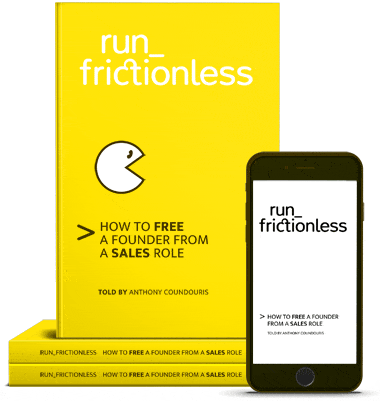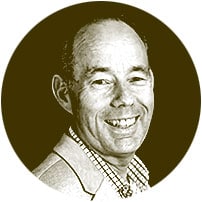
Podcaster Rob Hartnett explores the 4Qs framework
>
Podcaster Rob Hartnett 🎙️ explores the 4Qs framework
I had the privilege of sharing the 4Qs framework with internationally renowned sales guru, Rob Hartnett, on his acclaimed podcast show, It is all possible. Rob explores how the 4Qs helps business leaders overcome friction and what it means to COOs introducing operational excellence.
4Qs IN 30 SECONDS
The 4Qs is a decision-making framework designed to help founders and sales teams 🏆 scale a business. Quadrant 1 addresses whom we serve. The remaining three Quadrants deal with what we are serving the customer, what we share in common with the customer, and how we serve the customer.
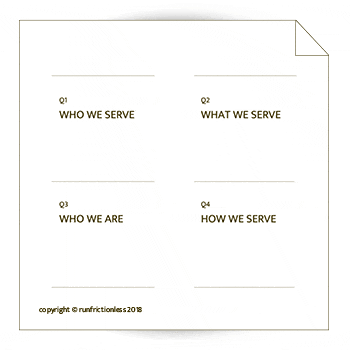
q. Peter Drucker mentions that one of the things that happen naturally in business is friction – what is your take on that?

Friction slows the customer from reaching their goal, and equally 👎 slows the sale. Friction is introduced when there is a mismatch between the customer’s goal and the company’s goal.
Think about a difficult interaction you’ve had as a customer. The experience, fraught with friction, causes you to quit, walk-off, and forget you ever wanted the product. The effort required outweighs the perceived benefit of the product.
What makes Drucker’s quote so interesting is he is talking about internal friction. During a session I had with Tom Williams, the author of The Seller’s Challenge, he talked at length about ‘internal friction’. He believes unless you address internal friction, you cannot address the friction felt by customers.
David Bell, CEO of JustPayroll, tells a story where he visited a department store to 🛍️ purchase a television set. He had the product in his hand, the money in his hand, and he said to the salesperson ‘I would like to make a payment and leave’.
The salespeople serving couldn’t understand that David needed to be put into an 🦄 express lane. Instead, the salespeople took David through a long-winded journey and made him start the process from the beginning.
In the department store example, the customer was not the only victim of friction. The salesperson is spinning wheels trying to sell the television set.
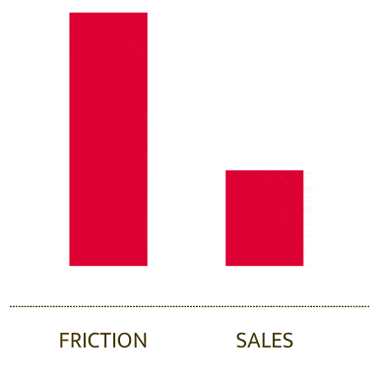
As a consequence of friction is a workforce that feels disempowered and disengaged. The Gallup Organization estimates that 14% of workers worldwide are actively disengaged at work. This is a state of mind where an employee is so discouraged at work that they essentially quit and stay—doing only what is marginally required of them to keep their job, but little more.
Smart CEO reports that poor leadership practices cost the typical company 7 percent in total annual sales and are cause for as much as a 32 percent higher rate of voluntary employee turnover.
q. what was your inspiration for developing the run frictionless model?

Necessity. I design and build sales systems for enterprises and startups across Asia Pacific. I’ve been doing this for a number of years. Each time I start a new gig I’m given three months to show results. That’s not a lot of time to show results.
So I wrote the 4Qs because I needed a robust tool that addressed friction at an organizational level. Reducing friction lifts the sales performance of the entire sales organization and places less pressure on individual sales performance.
There are plenty of frameworks out there but none of them are predicated on reducing friction. And none of them are built with product-market fit in mind.
A big influence came from Marc Andreessen, co-founder of Netscape who coined the idea ‘product-market fit’. For a lot of us, ‘fit’ was a light bulb moment.
What made his metaphor so brilliant was that rather than thinking of building a business as a step 1, 2, 3, Marc is saying it is 1, 2 then 1, and then 2, and then 1 again. While I like this metaphor of ‘fit’, however, product-market is a little too broad and I needed something more granular.
Today, we have identified at least eight kinds of plays or fits that one can make using the 4Qs.
q. let’s talk about the 4Qs framework. What are the four quadrants?

The 4Qs (short for Four Quadrants) is a decision-making framework. What I realized early in my career was that sales are not the responsibility of the salespeople, it is an organizational goal. What you quickly find with the 4Qs is that it pulls together the entire organization to get behind the salespeople, so the salespeople become the tip of the iceberg.
If I was to provide a summary of each of the Four Quadrants. Quadrant 1 who we serve, focuses on customer profile. Quadrant 2 what you serve is what we are serving to Quadrant 1 and is generally a product or service.
Quadrant 3 is who we are and is ubiquitous. Unlike Quadrant 1 and 2 which you can get a fit between Quadrant 1 and 2, Quadrant 3 is about our beliefs and cuts across all three Quadrants.
And the last one, my favorite, Quadrant 4, focuses on the precise number of interactions required to create a customer.

q. how do the 4Qs drive collaboration across the business?

The 4Qs organizes staff, their processes, and their tasks into one or more Quadrants, breaking down departmental barriers. The 4Qs framework empowers everyone in an organization to make decisions 🙌 together and predict how likely a decision will make the next sale frictionless.
In short, staff can make better decisions within their respective departments because they can anticipate the knock-on 👀 effect their ideas will have on other Quadrants, meaning other people, processes, and tasks.
Tim Wieringa, Digital Transformation & Operational Excellence, is a 4Qs user. He explains that by borrowing staff from various departments and organizing staff and their processes into one or more Quadrants, you are effectively creating a virtual innovation team.
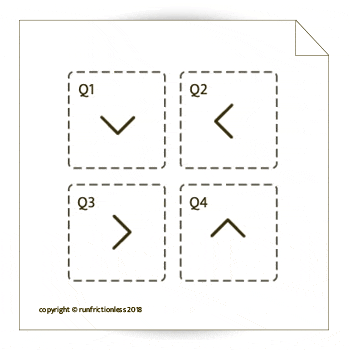
In theory, people from different departments meet once a week, sifting through intelligence 🍒 gathered, and innovating using the 4Qs decision-making framework. This team becomes a virtual innovation team.
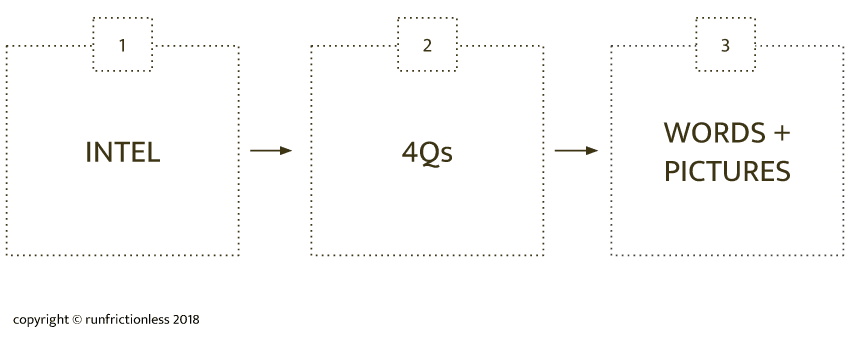
q: how have Operations Teams taken to run frictionless?

Discover if an organization is fixated on creating value in only one Quadrant and blinkered to the potential value that could be created in other Quadrants. It is not uncommon for technically-led teams to focus their efforts on Quadrants 1 and 2, and forget to tap into the irrational buying forces found in Quadrants 3 and 4.
James McLaren, Director of Digital Transformation, Ultimum. He schooled 🙏 me on how the 4Qs are a means to achieving operational excellence.
Cross-functional cooperation is essential to reaching 🏆 operational excellence. The 4Qs digital transformation framework gets cooperation from across an organization. The framework helps people in an organization talk about constraints, and therefore, together, they can better overcome 💪 these constraints.
Organizations don’t fall short of ideas, they fall victim to limitations they are each not aware of.
q: Can run frictionless work with large enterprises as well as smaller, more agile businesses?

Today, the 4Qs (short for Four Quadrants) are actively used by over 150 companies and consultants worldwide.
We have rolled it out to organizations as large as 300 persons. I think the reason it has been embraced by pre-revenue companies is because it does not rely on financial metrics.
There is an early-stage investment firm in the States called IQuipt Ventures that has adopted the 4Qs into their products but is also considering tying investment trunches to various fits.
q: How does it compare or work with the Agile framework we hear a lot about?

In mid-2020, Wouter Debaere collaborated 👏 with run_frictionless to design a mashup of the Agile and the 4Qs frameworks.
Wouter Delbaere has more than a decade of experience using Agile, so we valued his opinion. What transpired were 4 best practices that demonstrate how the 4Qs drives agile adoption further into an organization.
Perhaps I can mention just one here?
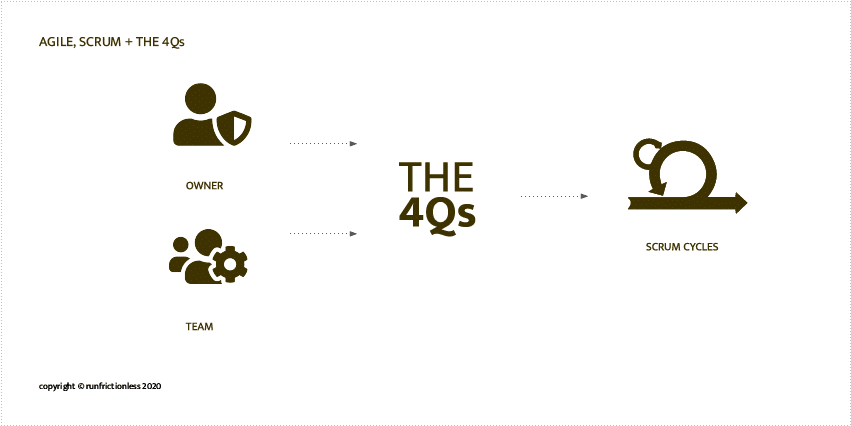
The first practice is to make the product owner responsible for matching the customer’s problem with the product, not salespeople.
This defies most organizational design, which places 🤫 sales directors as the Quadrant 1 custodian. Making the product owner the custodian of both Quadrants will give them first-hand intel and get the organization to a 👍 Quadrant 1-2 fit faster.
The product owner is responsible for matching the customer’s problem with the product. This is because the product owner is accountable 🤑 for return on investment. To drive Agile, make the product owner 👏 custodian of Quadrants 1 + 2.
q: What about McKinsey’s 7 Steps? 4Qs seems more adaptive to me?
In late-2020, Allen Pattiselanno, collaborated with run_frictionless to design a mashup of the Business Model Canvas and the 4Qs frameworks. Allen is a digital transformation veteran.
He runs a practice in Singapore called Digital Donkeys. He was once a user of 7s because like the 4Qs, 7s addresses ‘shared beliefs’. The problem is it is complex. You need to carry it with you as a printout or on your phone. BMC is similar. There are more than ten parts to consider and without a copy, you can’t make a decision.
The second issue I have with 7s is, not everyone agrees ‘shared beliefs’ are at the heart of every decision. Business leaders do, digital transformation consultants agree.
For example, investors are not interested in listening to whether you have a Quadrant 1-3 fit. They want to see what activities and results you have striking a Quadrant 1-2 fit.
There is merit to their thinking. Without a Quadrant 1-2 fit, there is no revenue. Without revenue, you have no business.
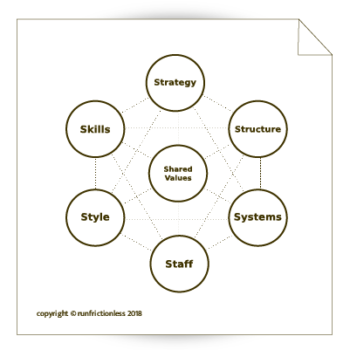
q: Let’s focus on Q3 Who we are. Why is this important?
Brand consistency is the minimum requirement of Quadrant 3. However, if you’d like to give your competitors a bad day, begin sharing beliefs with your customers. Sharing beliefs goes much deeper and stems from why a founder started the company.
It is true — customers from Quadrant 1 buy from Quadrant 2. Customers try to make a rational buying decision by comparing the features, limits, and work-arounds of various brands. However, Quadrant 3 disrupts the rational buying process by making it difficult to compare apples with apples.
Customers may decide to buy your product over a competing product because they like the direction the company is taking. They are prepared to pay more, or settle for less, because “these guys get me.” When Quadrants 1 and 2 are parity, Quadrant 3 can be the opportunity to differentiate.
Here’s what it sounds like when a customer shares your belief:
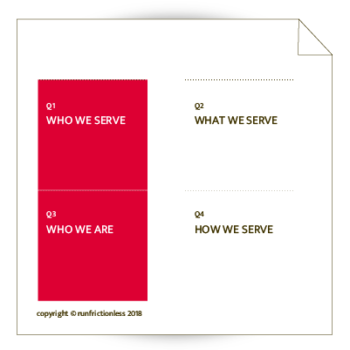
Do you hear their gratitude? They feel like you personally listened to them. They feel like they belong.
q: You say that a sale is a battle over beliefs before it is a contest over a product. Can you explain this?
We are often asked to design sales presentations. We recommend the first 5 slides of a presentation be devoted to describing the kind of problem your organization is solving and how you are solving it. The first few slides are devoted to achieving a Quadrant 1-3 fit.
In the book I wrote, run frictionless, I cite an example of how Tesla crushes Quadrant 2 fanatics.
In 2020 Tesla launched the Cybertruck. During the live product demonstration, the glass on the passenger door shattered. In a sense, Elon’s product demo failed. The Quadrant 2 fanatics (disguised as automotive journalists) wrote that the Cybertruck was ill-conceived and doomed to fail.
Customers disagreed. At the close of business the following day, Tesla posted a press release claiming they had received over a hundred thousand orders of the truck.
What we witnessed that day was how powerful it is when an organization can tap the irrational buying forces of shared beliefs. Tesla’s customers didn’t care whether the glass broke or not. They know all companies have bad product days. They buy Tesla because they believe in the direction the organization is taking.
Every company, including your business, is going to have bad Quadrant 2 days. The difference is whether your customers will forgive you or crucify you.
Sharing beliefs sets in motion a set of irrational buying forces that are near impossible for a competitor to mimic. The irrational buying force is so strong, that even when sales, product and operations people are screwing up, customers keep buying because they believe in the brand.

get started
using the
4Qs
4Qs SLIDESHARE RESOURCES
OTHER FREE RESOURCES
ACKNOWLEDGMENTS
The It’s All Possible Podcast is designed for those who want more from their professional and personal lives and want to understand the strategies and stories from ordinary people who are doing extraordinary things as leaders. The show is hosted by Australian leadership specialist Rob Hartnett, author of “It’s All Possible – How to Lead an Epic life” and Regional Leader VIC/TAS at Proteus Leadership.

run frictionless
now for only US$995





